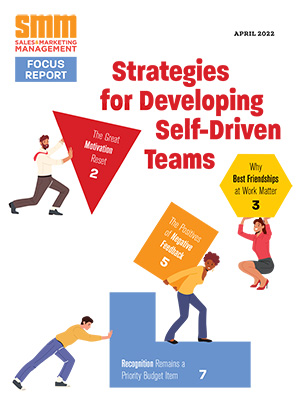When it comes to marketing initiatives, getting the biggest “bang for the buck” is essential. Accordingly, defining and analyzing the success of everything from tradeshow participation to social media campaigns are critical. At the same time some marketers wonder at what point did return on investment (ROI) become the holy grail of measuring success? Other business expenditures such as rent, additional administrative support staff, office supplies and workplace facelifts have no impact on productivity or revenue, yet they don’t face the same scrutiny.
Making matters worse, assessing ROI on marketing projects is fraught with inherent challenges. For instance, it is difficult to measure the value of brand awareness. Likewise, a multidimensional marketing campaign’s impact may be cumulative, which makes it hard to measure the effect of a single ad or initiative. Equally challenging is keeping up with the sheer volume of data that needs to be analyzed and acted upon with the influx of new marketing platforms.
Forward thinking companies, however, recognize the fact that the true measure of ROI is more than a numbers game. Yet, too often, like the elephant in the room, this concept is overlooked. While business analytics are important and advanced technology makes operations easier than ever before, the intangible value that comes from connecting with customers is far from out of style.
The changing face of marketing
Traditionally, sales, leads and cost-per-acquisition have been the top three key performance indicators (KPIs) in business. However, a rapidly expanding global market and the introduction of several new channels and platforms are increasing sales and marketing opportunities significantly. For instance, the 2013 Social Media Social Marketing Industry Report found 86 percent of over 3,000 marketers surveyed indicated that social media is important for their business, up from 83 percent in 2012 (Copyright 2013, Social Media Examiner). The social media trend only is expected to grow as new technologies are introduced.
Although the use of data mining and business intelligence technologies is on the rise, companies struggle to keep up with ever-increasing amounts of data. For instance, 46 percent of respondents in a 2012 survey of North American retail executives conducted by research and content service company, Edgell Knowledge Network, named handling the volume of incoming data as their topmost challenge. As such, it’s not surprising thatmany companies compile data but never take the time to analyze the results.
The icing on the cake is the “disconnect” between marketing and saleswhen it comes to tying activities with results. Traditional silos, business politics and budget cuts create an environment of polarized thinking that can hinder collaboration and further set the stage for a blame game when initiatives fail. The complex relationship and lack of communication result in unmet expectations. The sales team wants to be involved in the marketing process to make sure marketing is doing everything necessary to support sales. Marketing wants feedback from sales, but they believe sales management does not always follow through. An annual study of lead response behavior conducted by InsideSales.com and reported in Forbes lends some credence to this assumption. Of the 696 companies with online lead forms, sales reps on average waited 39 hours before attempting their first call to a newly submitted web lead. The same survey found “nearly 36% of those audited never responded to a submitted lead during the entire two-week tracking period.”
Make better marketing decisions
Like it or not, marketing is about more than just sales, according to Jennifer Bondurant, Director of Marketing and Strategic Communications at Westminster College, in Fulton, Missouri. “Beyond the sales results, the marketing department needs to make sure that a company’s brand matches how the company is engaging with the customer and the reputation it is leaving behind,” said Bondurant. Though ROI is an essential consideration when it comes to making marketing choices, that doesn’t mean it should stand alone. Companies that engage in the following best practices will increase the effectiveness and impact of their marketing programs:
- Work to create an environment that encourages marketing-sales alignment.A supportive and symbiotic relationship is essential according to Bondurant. “The sales force offers direct eyes and ears to the consumer, so marketing should tap into their insights,” said Bondurant, adding that marketing research and studies enable sales to achieve their goals.
- Research what mediums and frequency work best with the company and within the industry and then develop compelling messages to appeal to the target audience. “Knowing your competitors, what makes you better for the consumer, and a clear message explaining why you should be their number one choice is essential,” said Scott Nelson, Enterprise Sales Manager, ePlus Technology and 30-year sales and marketing veteran.
- Strive to increase marketplace visibility.Produce articles, white papers, consistent blogs and other forms of corporate communications that address topics of interest with customers and prospects. Volunteer to help with and/or sponsor activities and events with philanthropic organizations and other community and industry-wide groups.
- Stay in touch through personal connections, such as telephone calls, notes and emails with current and potential customers and in-person visits.“The opinion of your customers, your sales people and those around you are never found in data or research,” said Nelson.
- Keep in mind, measuring initiatives is rarely accomplished with a cookie cutter approach.“No two campaigns are going to have the same planning footprint. What you measured last year or in the previous campaign may not be what you need to measure in the next one,” said John Sternal, Director of Public Relations and Social Media for Merit Mile.
Numbers don’t tell the whole story
The human side of marketing is an equally essential factor that often is overlooked. Companies need to stay in touch with prospects and customers if they want to maintain a competitive edge, generate market leader status and support their sales teams. Defining frequency and medium and then focusing on creating the right messages that resonate with prospects and customers is the real key to successful marketing. In other words, think beyond ROI… and get the elephant out of the room.
Gerri Knilans is president of Trade Press Services, a California-based corporate communications and media relations firm. Since 1995 the company has delivered writing and publishing services that help clients increase marketplace visibility, develop a competitive edge, become the recognized industry leader and achieve their marketing goals. For more information, please call 805-496-8850 or visit www.tradepressservices.com.


